I Did the AB Closet Editing System with My 5-Year-Old
A Perfect Rainy Autumn Weekend Activity for Rediscovering Your Style
Autumn is truly starting in Lithuania. My 5-year-old is sick, so there wasn’t much to do over the weekend - except that a strong urge to overhaul my closet suddenly kicked in. I’ve been listening to
’s book Wear It Well and have been meaning to review my wardrobe, since it hasn’t been bringing me much joy lately. And honestly, what better activity for a cozy autumn weekend at home?If you’re considering doing her AB closet editing system, it’s best to go straight to the source - Allison has made several videos explaining how to do it. But in a nutshell, it goes like this:
Select all your Regulars - items you wear all the time. Put them on a separate rack or bed and look at them together. Analyze what they have in common: silhouettes, materials, colors, and styles you’re drawn to.
Note: Include what you actually wear - this is your real style, not what you wish it were. (I had several pieces I wear constantly but actually dislike.) Allison argues that this is your actual style - how you present yourself daily, not what’s in your closet or what you admire. I think this makes a lot of sense.
Select your “Nevers” - items you never wear - and divide them into three piles:
No, never: things you genuinely dislike or never want to wear again.
Not now: things you like but not for the current season or stage of life.
How: pieces you like but don’t know how to wear.
The No, never pile includes clothes you simply don’t like. Analyze why: is it the fabric, silhouette, or style? Make notes to avoid similar mistakes. Then sell or donate them.
The Not now pile includes clothes you plan to wear later - like seasonal items. Pack and store them, but only for a set time; if you still don’t wear them afterward, move them to No, never.
The How pile is for clothes you like but struggle to style - statement or unusual pieces, or those that don’t fit with the rest of your wardrobe. Allison suggests pairing these with your regulars, since those are pieces you already feel comfortable in.
As I was preparing for my closet review, my 5-year-old of course wanted to join. I thought, why not? So we decided to do her AB closet review too.
(Side note: while doing this, I realized this system would work brilliantly for reviewing toys - which are usually overflowing. But let’s save that for another rainy weekend.)
My Regulars

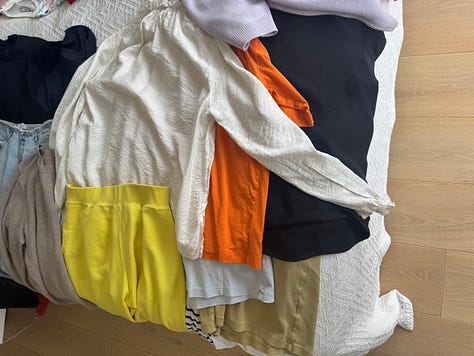
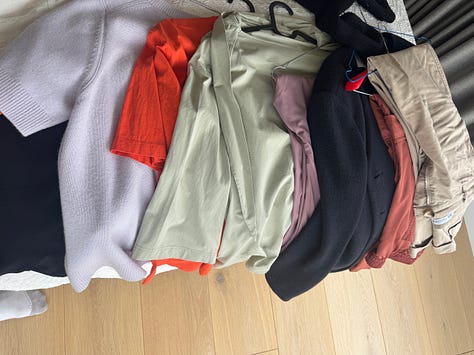
I first went through my regulars and looked for similarities. Here’s what stood out:
Mostly neutrals (gray, navy, beige) with a few bright pops of color.
Overall light color scheme.
No patterns - no statement T-shirts or prints, except for acid-wash jeans.
Low or mid-rise jeans and pants - somehow they are more comfortable for me.
No delicate materials - almost no silk, satin, or other demanding fabrics.
Color used as a playful accent (orange, yellow, lilac).
Virtually no skirts.
Modern and minimalistic pieces - clean lines, tailoring, or volume play.
Comfort-focused - lots of cotton, denim, and knits.
Visual interest comes from silhouettes, details, and bold color blocking, not prints or accessories.
Loose, oversized tops paired with more fitted bottoms for balance.
To be honest, I found my regulars a bit uninspiring. They’re not very interesting, and since I don’t do elaborate styling or wear much jewelry, the overall look is quite simple. Clearly, there’s room to introduce more interesting pieces into my wardrobe.
My 5-Year-Old’s Regulars
When looking at my daughter’s regulars, I realized how much cooler her color scheme was. She likely has a different seasonal type (probably Winter, while I’m a Warm Spring), and our wardrobes reflect that - even without consciously planning it.
When I asked what she liked about her pieces, she said she loved some because they were “cute” (like the teddy bear sweater) and others because they made her feel “grown up” (the Harvard sweatshirt). How perfectly that sums up being five.
Her regulars showed:
Fun-dominant base: prints, graphics, and playful motifs (teddy bears, florals, tie-dye).
Color-forward: lots of pinks, lilacs, and reds with bright splashes (orange, tie-dye).
Storytelling elements: many items feature animals or characters.
Comfort + coziness: soft fabrics, leggings, knits - easy to move in (“so I can do the splits!”).
Little structural variety: few tailored or simple core pieces.
Expressive, not restrained: her style identity is joyful and imaginative rather than polished - as it should be for a 5-year-old.
My Nevers - “No, Never”
Most of my nevers were simply worn out, “tired,” or had fit issues (too small, stretched, etc.). I donated or discarded a big pile. Then I analyzed the rest and found a few recurring themes:
Unflattering fits: pieces that need too many tweaks to look good. For example, I gave away Brancusi velvet pants - they require heels to elongate my legs - and full skirts that demand tight tops for balance. These items just don’t suit my proportions and bodytype. I’m learning that ignoring fit is not a good idea. I might subscribe to the philosophy “f*ck body, wear what you want” but I still want clothes that look good on me, and being selective in this aspect does pay off. (As much as I love that COS skirt everyone’s buying, I’m skipping it - it needs a fitted waist top, and I know I won’t wear it.)
Lack of modernity: some pieces just feel dated. For instance, my pink cotton jacket - cozy but conservative - always made me feel too mature.
Basic, uninteresting T-shirts: technically regulars, but if I hate them, they’re “no, never.” I feel so frumpy in them - they only work layered under sweaters.
Colorful, “pretentious” dresses: I always imagine wearing them in some ideal life, but in reality, they just hang there. (My melon-colored Tibi dress is a prime example - tailored to fit but barely ever worn.)
Synthetic materials: many of these clothes are also polyester - too hot or too cold, never quite right for home wear.
My 5-Year-Old’s Nevers
Her reasons were simpler:
“Too boyish.” A sporty blue sequin bomber fell into this category - she gave it to her younger cousin.
“Just don’t like it, Mom - don’t ask again.”
The “How” Pile
These are clothes I like but never wear. Main reasons:
Too formal: my life isn’t formal, and even for events I prefer a blazer with jeans (tech-industry dress code) rather than full suit. My wool trousers stay unworn - they’d be destroyed on muddy school runs or winter weather. These too formal items make up about half my “How” pile.
Skirts: I like them but never know how to wear them in winter. I dislike tight tights, and leggings feel complicated. Maybe I just need softer, looser tights - something to try this fall.
My 5-year-old had no “How” items -she either likes something or not. But funnily enough, she wore one of her “no, never” sweatshirts a few days later, so this exercise clearly opens your mind.
Conclusions
Some of my “no, never” pieces were too worn or too tailored to sell, so I decided to repurpose them for home wear. That annoying pink jacket? It’s now my go-to for WFH. Maybe my home style isn’t the chicest and this is not what Allison would recommend, but at least I’m wearing what I own.
So, what did I learn after the edit?
I have a solid set of clothes for business-casual situations, but my WFH wardrobe is mostly comfort-driven and lacks real style.
I need to stop wearing basic T-shirts unless they’re layered, as they ended up both in my regulars and no, never piles.
I should never buy items without trying them on (looking at you, overseas Tibi purchases!).
I should focus on the silhouette that actually works for me: more fitted bottoms and relaxed tops - literally every top in my regulars was relaxed.
I want to incorporate more skirts into my day-to-day life.
And, as a bonus, the AB edit turned out to be a surprisingly effective way to convince my 5-year-old to tidy up her closet :)
Even though I already knew my wardrobe quite well and didn’t uncover any hidden treasures, the process was still very worthwhile. It’s a wonderful way to reconnect with your clothes - and, in my case, to spend a lovely weekend afternoon with my 5-year-old.


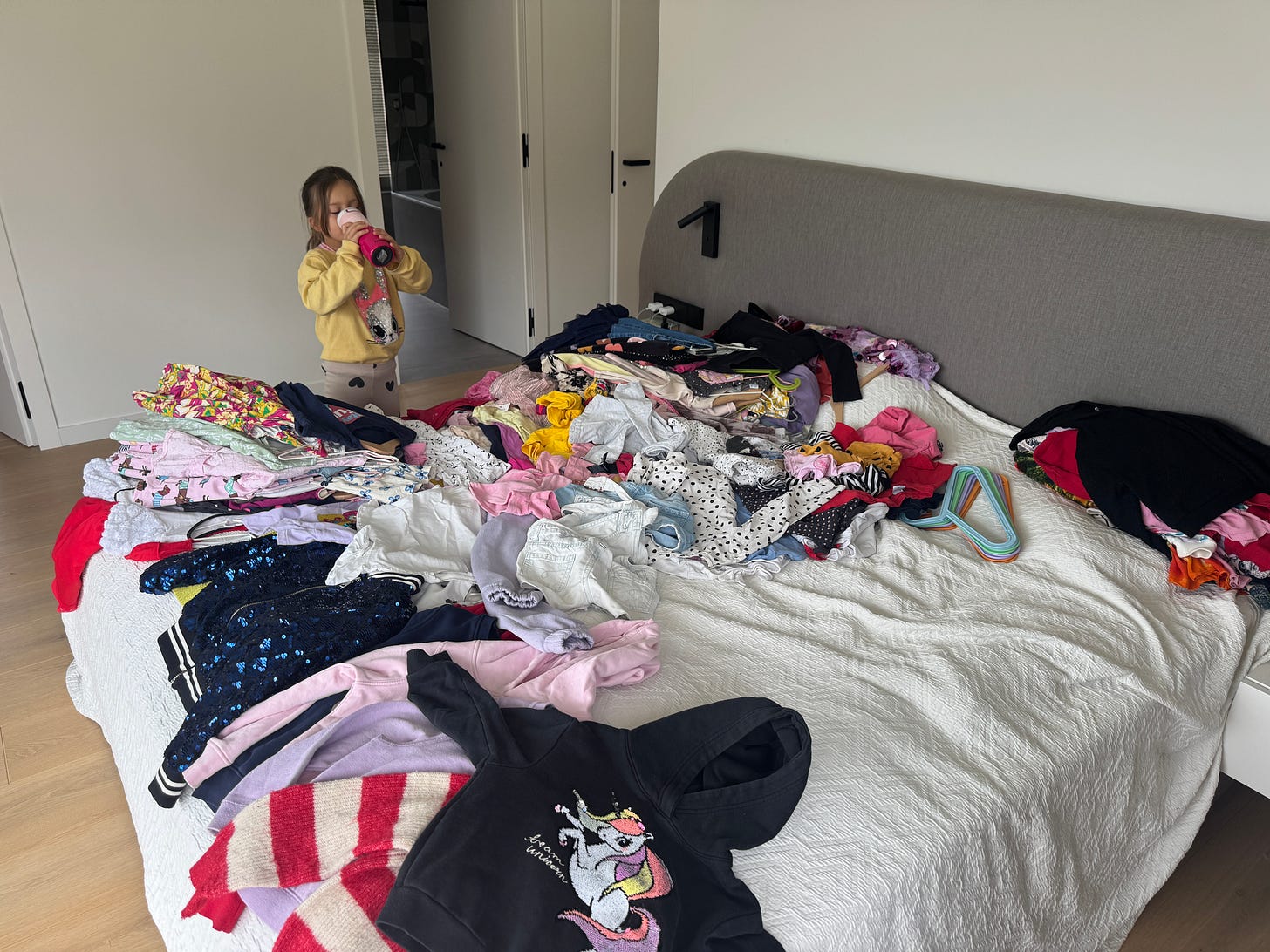
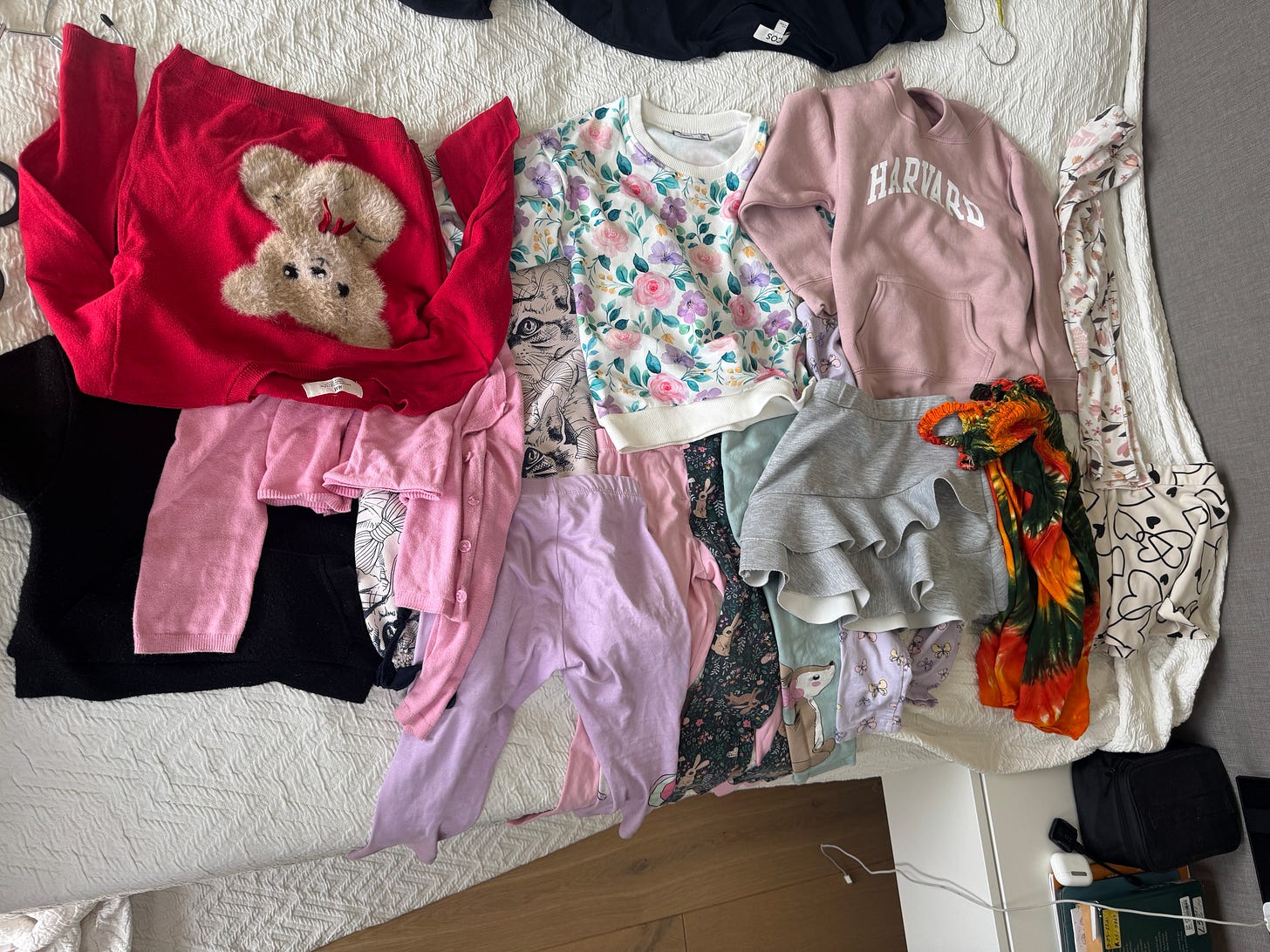
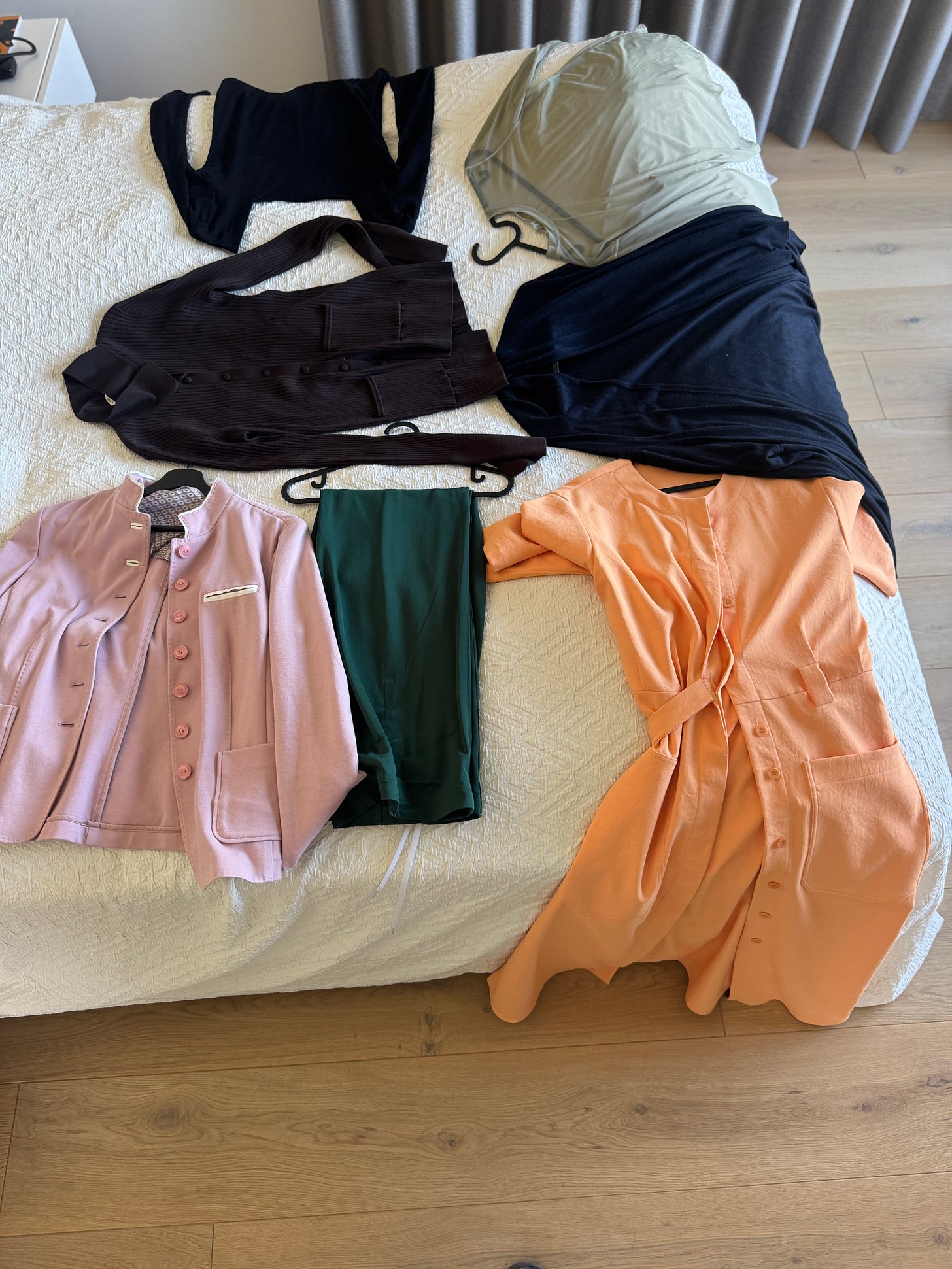
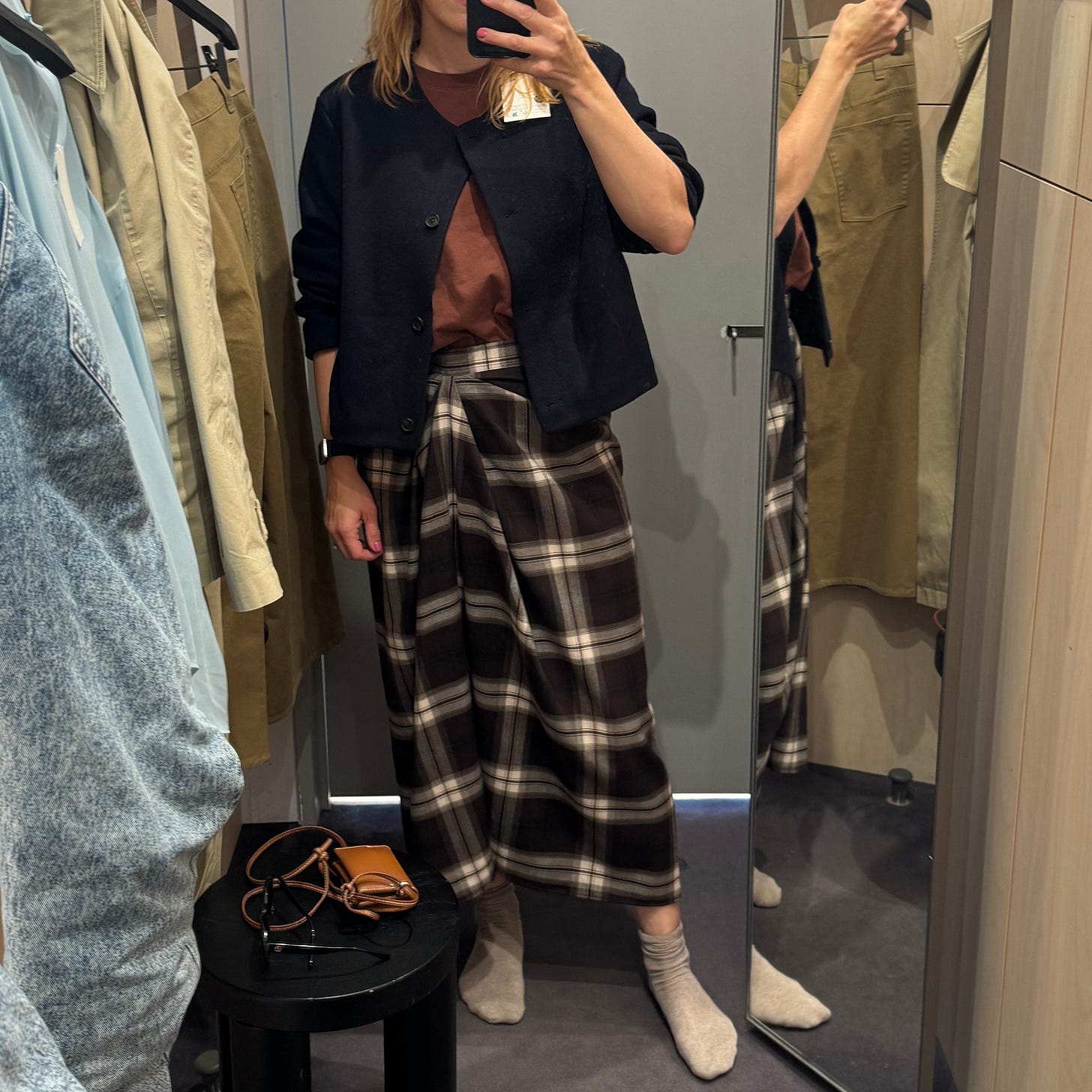
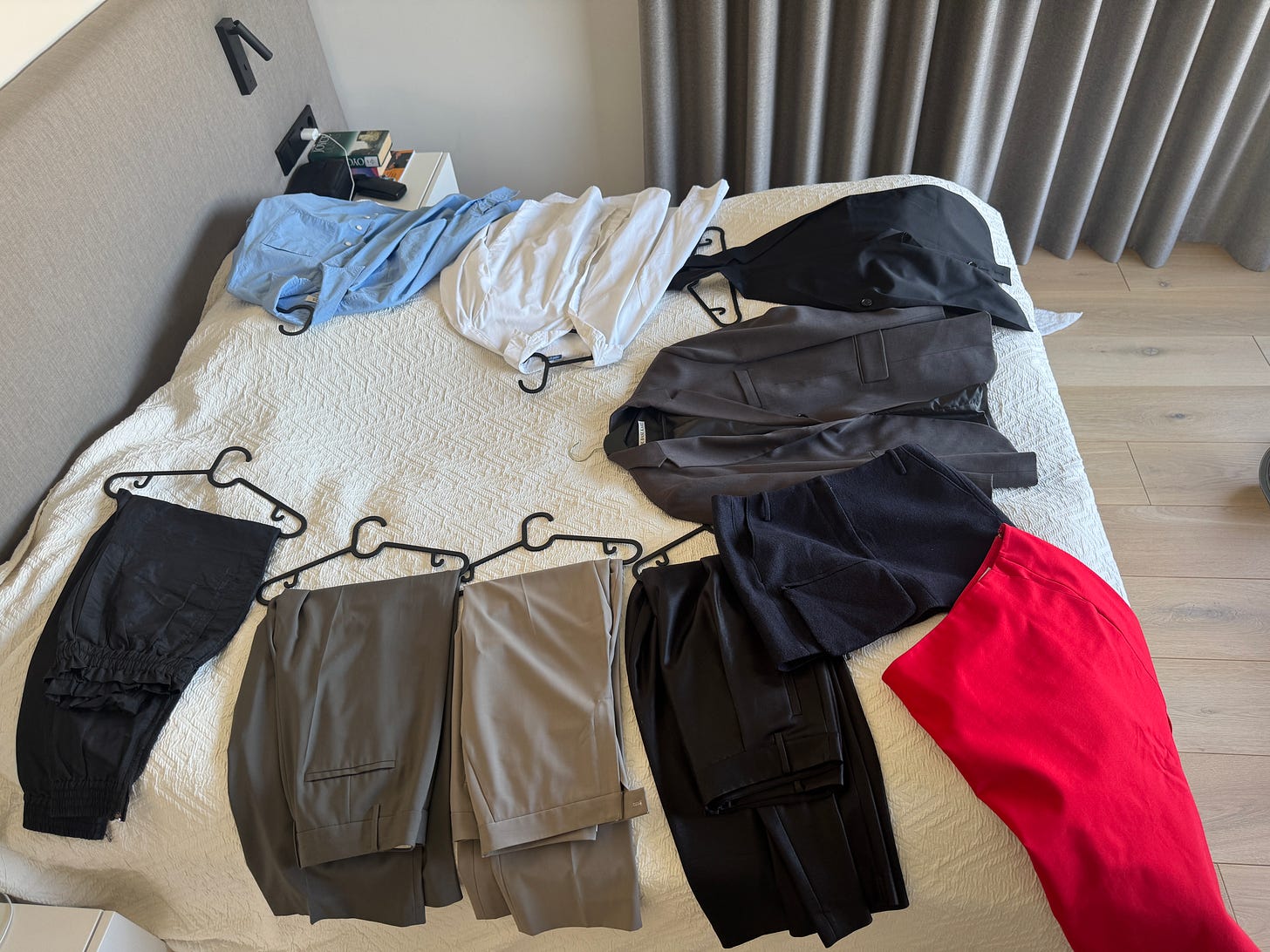
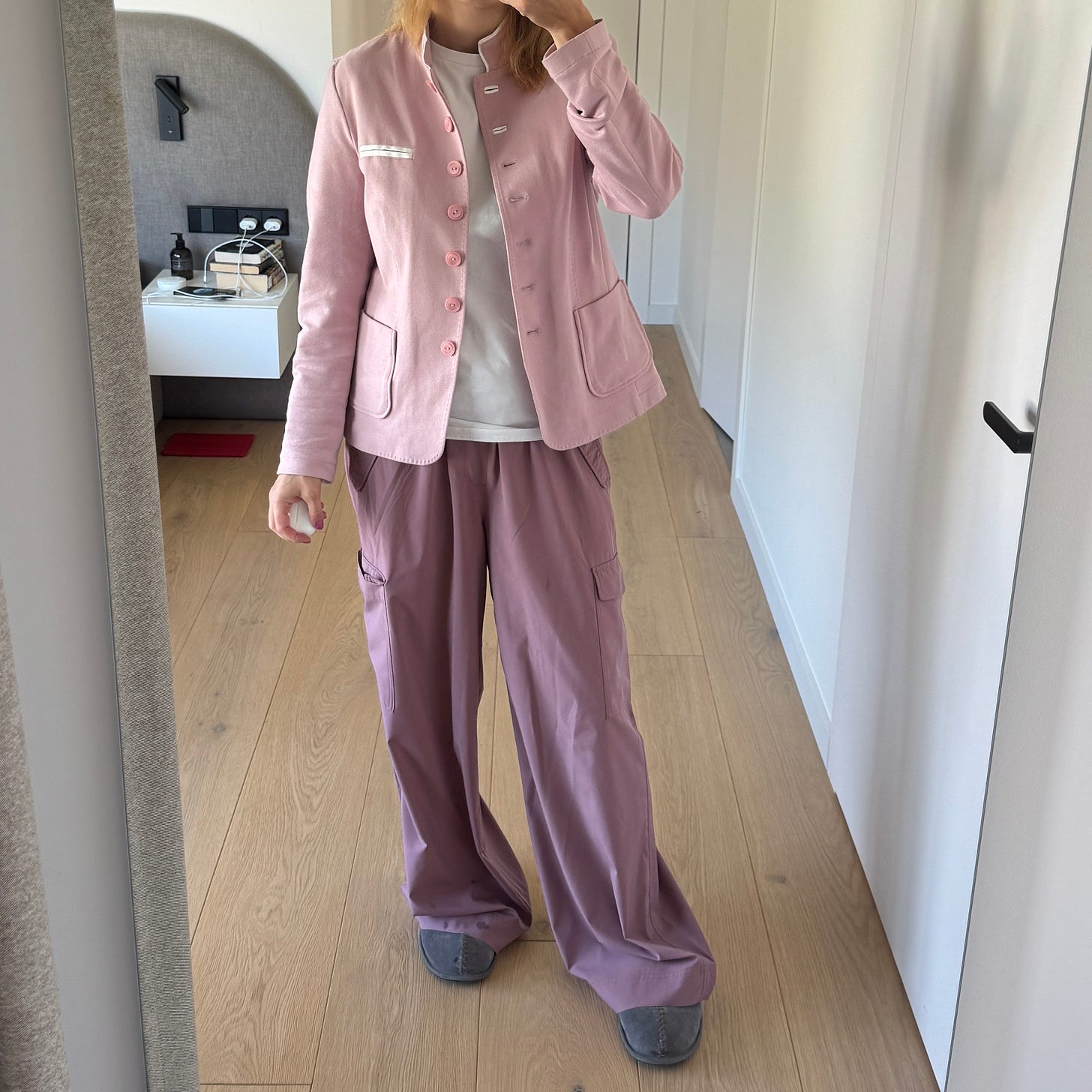
This was great. I have AB’s book but somehow following your process helped it click in for me.
Oh that makes me want to do it with my 5-year-old daughter too! She’d love that!